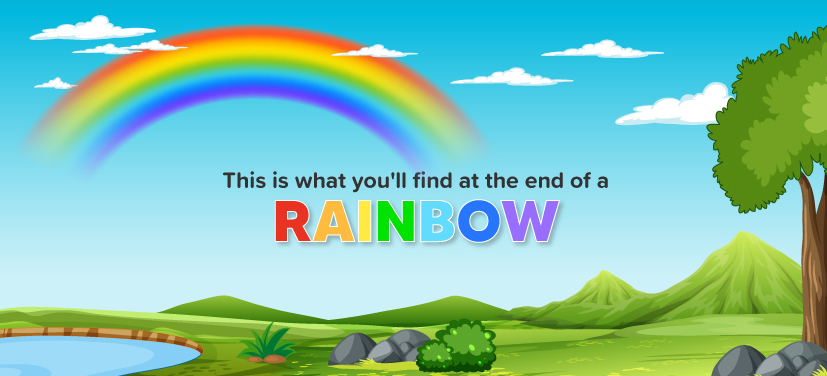
Ever wondered what’s at the end of the rainbow? A pot of gold or a leprechaun, maybe? No matter what you believe, it’s safe to say that everyone loves a rainbow. So how does a rainbow form, and what makes it so colourful?
To understand the science behind rainbows, we must first understand how light works. Light is made up of different colours like blue, red, green, and yellow. Each colour has a different wavelength and each differing wavelength means each colour bends differently when light passes through an object. When light passes through a piece of triangular glass, called a prism, it splits into seven different colours due to the different wavelengths.
Nature’s prisms come in the form of raindrops, which is why we only see rainbows when there is water and it’s sunny. Sunlight passing through raindrops refracts into multiple colours, seven of which we see. When light changes direction upon entering any object, it is called refraction.
A rainbow is also dependent on how a person views it. Much like with everything related to light, it depends on where you’re standing and at what angle you’re seeing it. When we see a clear, bright rainbow, the sun is positioned behind us and has to reflect light at a 42-degree angle. The light rays go through raindrops and are reflected onto us. When the light exits the raindrop and reflects upon our eyes, we perceive seven different colours. Violet has the lowest wavelength and hence, bends the most, while red bends the least with the highest wavelength. This is why we always see violet at the bottom and red at the top.
Now, for the big question: What’s at the end of a rainbow?
The answer: rainbows have no ends. Rainbows are actually full circles. We see a semi-circle because we are at ground level. If you were in a plane, and the sunlight hit at the right angle, you would see a full rainbow, which is a perfect circle.
Sometimes, we see a double rainbow. This happens when the light is reflected from the raindrops at a slightly higher angle than the primary rainbow. When the light exits the raindrop at around 50 degrees, it creates a fainter, second rainbow.
Now that you know how rainbows are made, do they seem even more magical? Let us know your thoughts in the comments.
If you are a big fan of colours you can learn how to make natural colours at home.
Did you enjoy reading this? Check out other interesting reads from The Learning Tree Blog:
The most important evolution of all : Lighting!
Madhavi is passionate about everything to do with books, art, literature, films, trivia and food. A former journalist, she believes that asking questions makes life interesting.